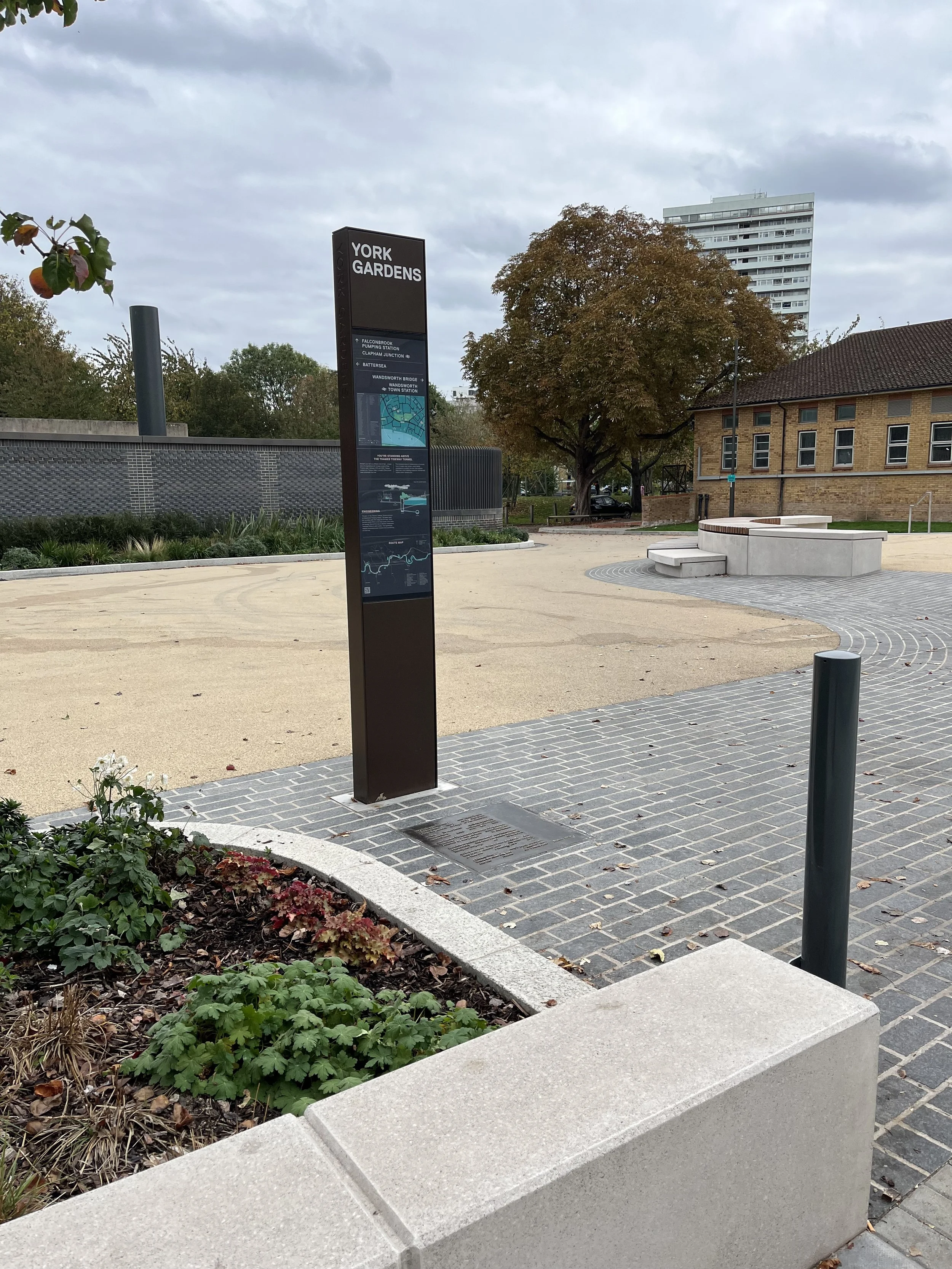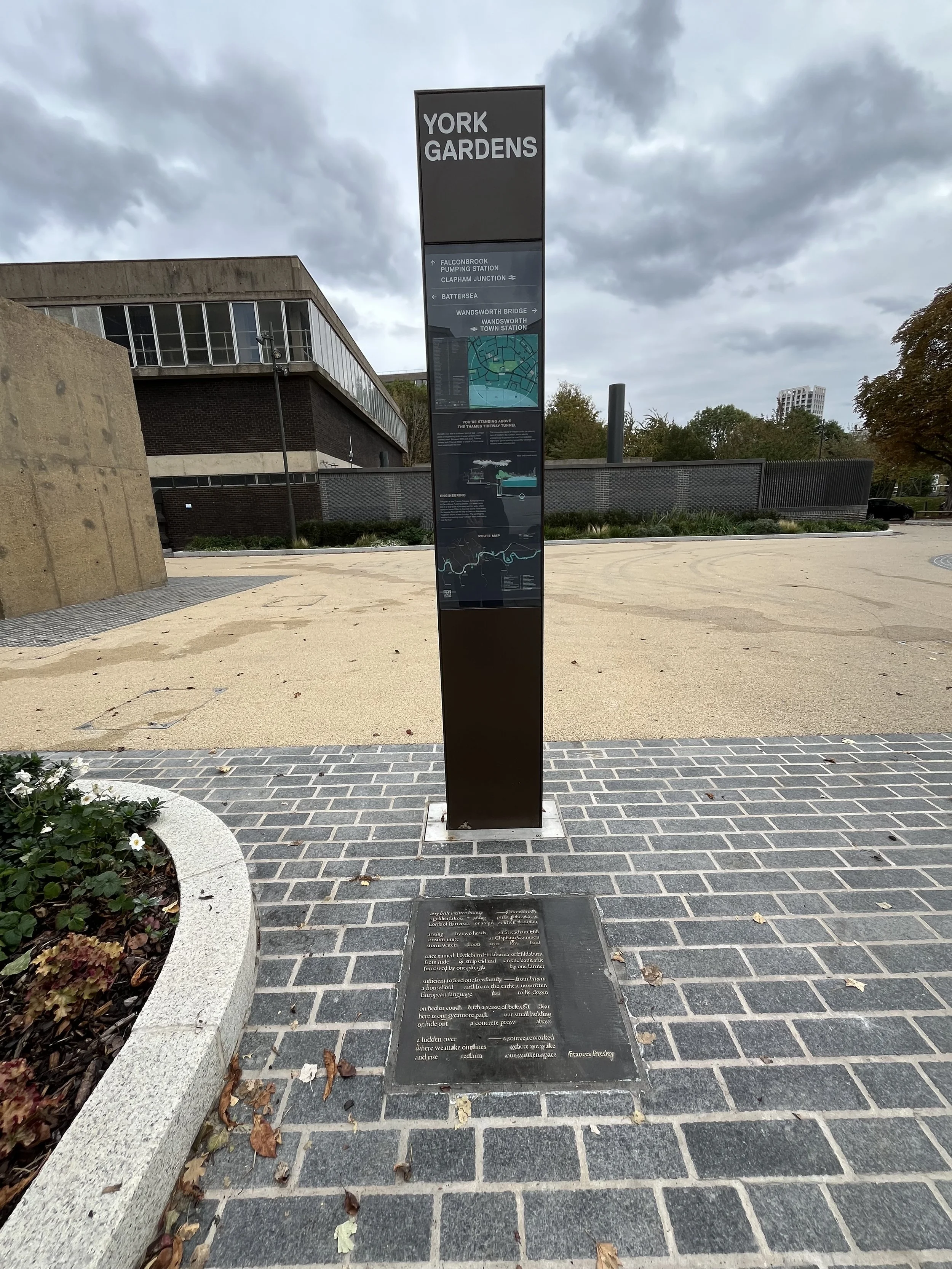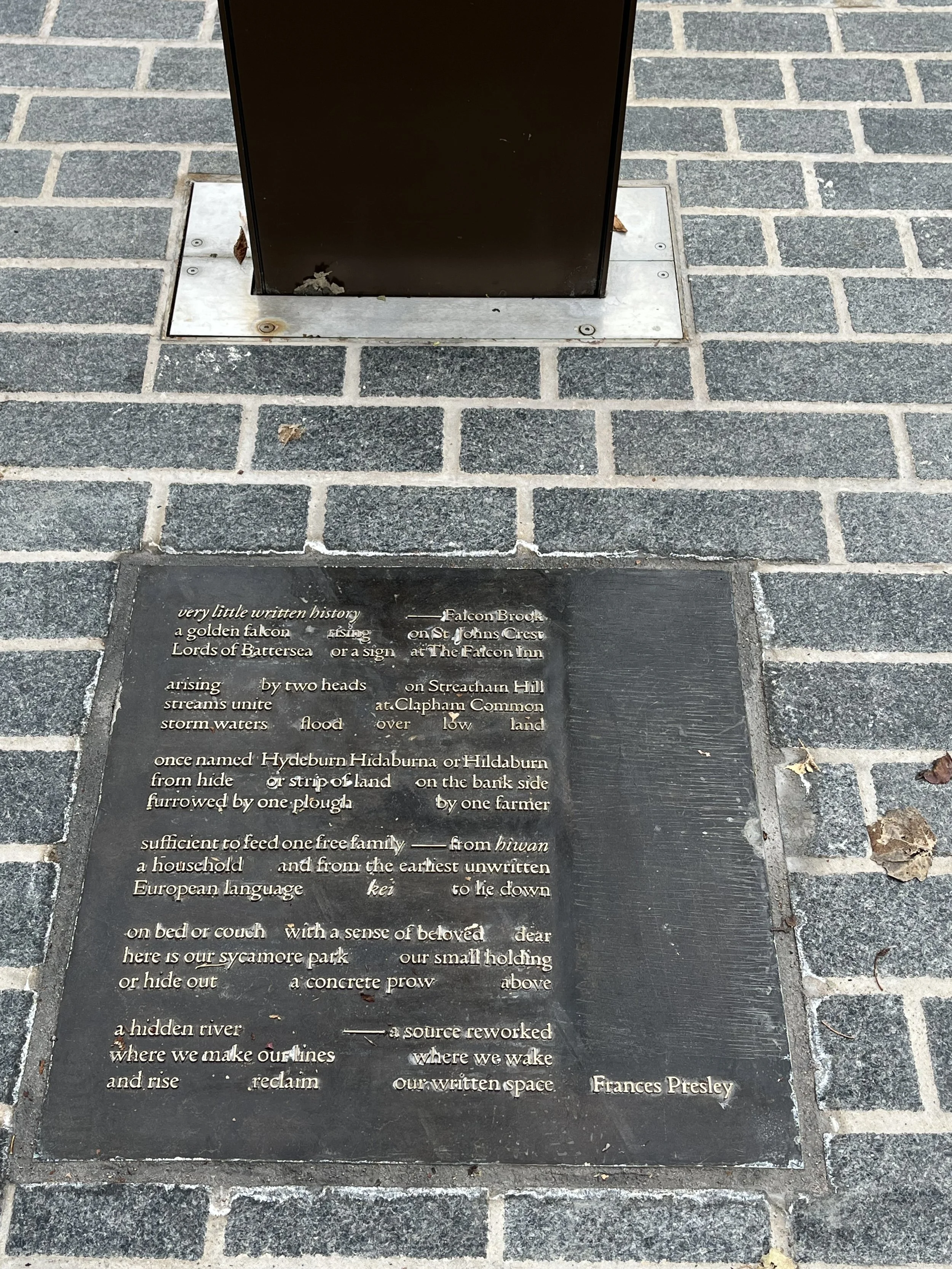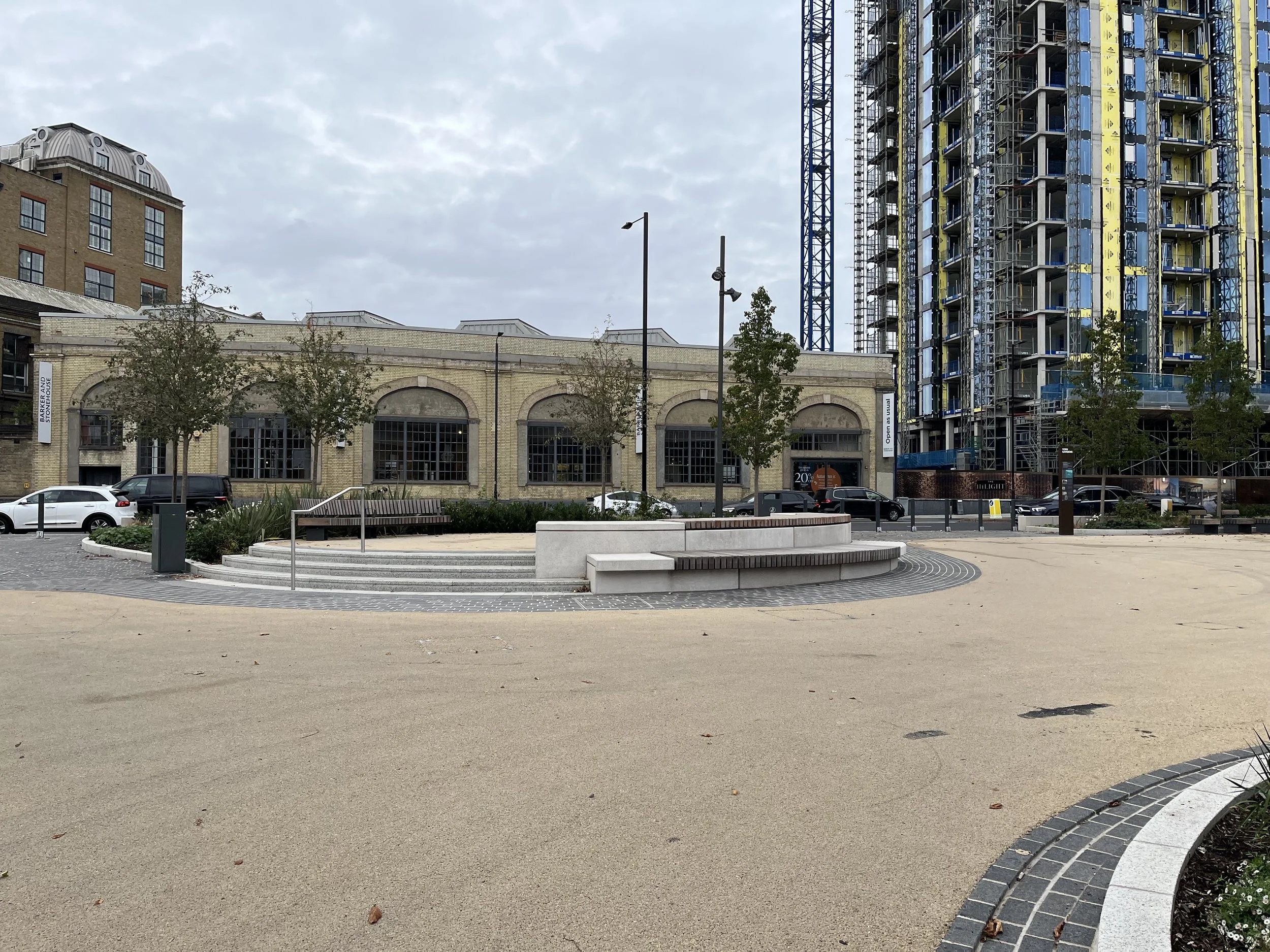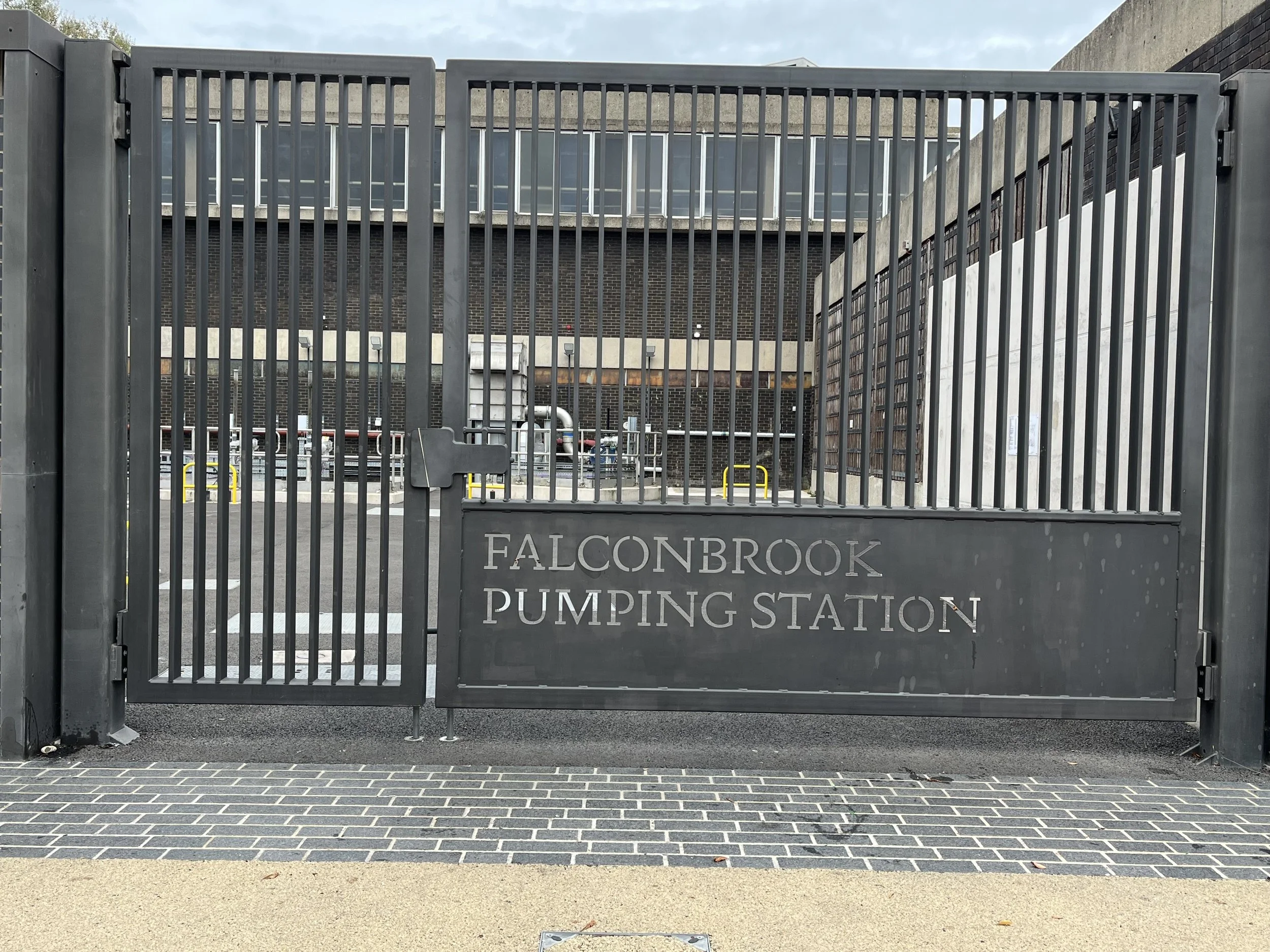York Gardens (Falconbrook Pumping Station) , Tideway, London
York Gardens (Falconbrook Pumping Station): Falcon Brook, Frances Presley
Year
2024-2025
Client
fereday pollard for Tideway
Artist / poet
Frances Presley
Typography / Graphic Design
Robert Green
Service
Commission Management
Location
Falconbrook Pumping Station, York Gardens, London
A permanent commission for York Gardens
Frances Presley has been commissioned by Tideway to create a poem for a plaque next to Falconbrook Pumping Station, and the poet based her response on the Falconbrook, a lost river, prone to flooding - as well as major redevelopments of the area and their impact on the green open space. She undertook detailed research into the site, which occupies part of York Gardens near Clapham Junction. Drawing on Tideway’s Heritage Interpretation Strategy, ‘Babylon to World City: Civic London’. Her poem is also rooted in the specific history and character of the Falconbrook site, particularly its connection to the development of London’d modern sewer system.
The poem explores the layered histories of the land and river through the etymology of Falcon Brook, particularly its earlier name, Hideburn. The name Falcon Brook likely originates from the family crest of 17th-century landowners following the Reformation. Hideburn, used in medieval times when the land was church-owned, refers to strips of farmland called ‘hides’ – a term rooted in the ancient word for ‘household’. Frances connects this historic notion of household to the present-day Winstanley and York Road Estates, their communal park, modernist concrete flats, and the people who live and work there. She also plays with the contemporary meaning of ‘hide’ to reflect on obscured or forgotten human histories.
The other main element of the poem is the river itself. It has two tributaries which merge into one as they descend from the hills and, at times, threaten to submerge the inhabited land, so that the river has been redirected and channelled. In the final verse the river, the surrounding land, and people’s lives, are given equal value and are foregrounded, or rise up, through the writing.
The river itself is a central element of the poem. It has two tributaries that merge as they descend from the hills, and has long threatened to flood the surrounding area – a risk mitigated by its redirection and containment. In the final verse, the river, land, and lives of local residents are given equal value, all rising to the surface through the act of writing.
Frances collaborated with designer Rob Green to realise the poem’s layout in Doves Type. The justified margins evoke a strip of land and the river’s containment. The poem’s spacing and punctuation carry both semantic and visual weight, inviting multiple interpretations of its lines and alluding to unwritten or hidden histories, as well as the buried flow of the river itself.
Installed at Falconbrook Pumping Station, the poem offers a quiet yet resonant presence in the landscape. Conceived as an accessible work rich in historical and contemporary resonances, it reasserts a sense of shared history and lived experience.
“When I researched the Falconbrook and its surrounding area there seemed to be very little written history, and it was almost as hidden as the river itself is now. ”
The plaque is approx. 60cm by 60cm cast in bronze and is located within the paving just by the new park entrance. The bronze contrasting strongly with the Brutalist concrete surfaces of the pumping station.
Doves Type was created at Hammersmith as a reinterpretation of hand drawn manuscript letters that preceded the creation of print. A bitter feud between the two partners Thomas James Cobden-Sanderson and Emery Walker, of Hammersmith’s celebrated Doves Press (named at the Dove’s Pub), lead to the protracted disposal of their unique metal type into London’s River Thames from Hammersmith Bridge. Robert Green, a contemporary designer, began to re-create the Doves type as a digital facsimile in 2013. In 2015, after searching the riverbed of the Thames near Hammersmith Bridge with help from the Port of London Authority, 150 pieces of the original type were recovered, which helped Green to refine the font. Doves Type is being used in several Tideway commissions, in addition to this one.
“Yet we know that history was made by the people who lived here and worked the land, alongside the river. I hope this poem and its artwork will help to reassert both our common history and our contemporary creativity.”
Frances Presley was born in Derbyshire and lives and works in London. She studied modern literature at the Universities of East Anglia and Sussex, as well as in the US and Switzerland. In the 1980s, she moved to London and worked in community development. Her many publications include Lines of Sight, Ada Unseen, Collected Poems and Black Fens Viral.
For more information see: https://www.francespresley.co.uk/
For more information see:
www.tideway.london
Based on the Doves Type®, copyright 2017 Robert Green. All rights reserved. The typeface is available to licence via www.typespec.co.uk.

